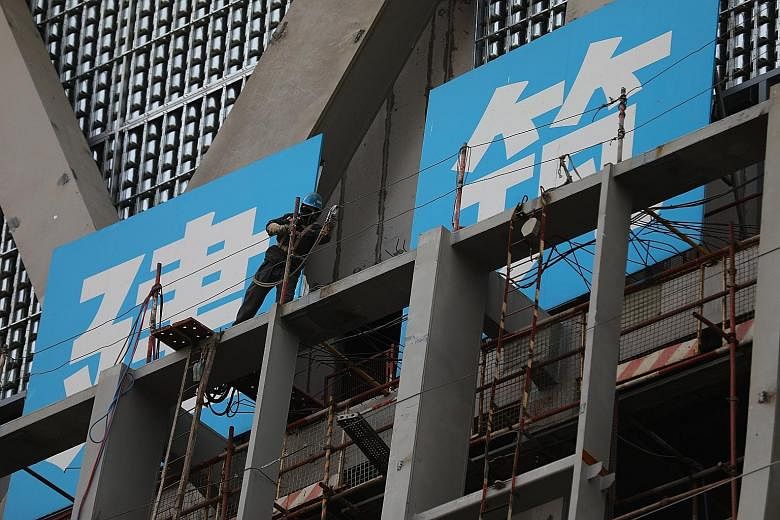China's economy grew at a forecast-beating 6.9 per cent last year as it rebounded from the 26-year low of 6.7 per cent in 2016.
The recovery was helped by stronger global trade that boosted exports and strengthened the manufacturing sector, said analysts.
Robust consumer spending and the effects of supply-side reform measures that began in 2015 also played a big part, they added.
Analysts are forecasting growth of between 6.4 per cent and 6.7 per cent for this year. They see few risks to the economy, although there are some concerns over escalating corporate debt and trade tensions with the United States.
The 2017 growth figures, announced yesterday, showed the first two quarters growing by 6.9 per cent and the last two by 6.8 per cent, for a full-year expansion of 6.9 per cent. This was against forecasts of around 6.5 per cent, including by the International Monetary Fund.
"The national economy has maintained the momentum of stable and sound development and exceeded expectations," National Statistics Bureau (NSB) director Ning Jizhe said in his report yesterday.
However, sounding a note of caution, he added: "We should also be aware that there are still difficulties and challenges confronting the economy, and the improvement of quality and efficiency remains a daunting task."
Mr Ning was referring to China's intention under President Xi Jinping to move from high-speed growth to better-quality growth and efficiency.
Said Mr Rajiv Biswas, Asia-Pacific chief economist of consultancy IHS Markit: "The strong performance of the Chinese economy in 2017 was boosted by robust consumer spending, an upturn in export growth as well as strong residential and public infrastructure construction growth."
Another reason, noted Dr Wang Tao, chief China economist of UBS Bank, was that the property sector remained strong for longer than expected and was a positive contributor. This was despite policy tightening to rein in housing prices.
The supply-side structural reforms launched in 2015, including the reduction of excess industrial capacity, reducing housing and commercial property inventory and deleveraging also helped to boost growth, said Dr Raymond Yeung, chief economist of Greater China at ANZ Bank.
The NSB's Mr Ning also pointed out that taxes and fees were lowered to reduce costs.
Such measures "have led to rising commodity prices, helping to restore profits and boost business confidence", noted Ms Julia Wang, Greater China economist at HSBC Bank.
She added that as the recovery gained traction last year, it gave policymakers the confidence to tighten policies, which in turn led to the slower growth momentum of the last quarter. These included tighter mortgage rules to cool the property market, environment-related regulations to fight pollution and the tightening of financial policies and interbank liquidity to rein in debt.
China will continue with reforms to improve the quality, efficiency and sustainability of growth, said Dr Wang of UBS.
"We expect state-owned enterprise (SOE) reform to be pushed forward and, perhaps, even accelerated," she said. Other areas of reform included the social safety net, hukou and tax reform, she added.
But she did not think these necessarily would drive growth downwards or upwards in the short term.
Rather, slower growth would be the result of measures to contain risks, including deleveraging to contain financial risk, tighter property policies and tighter environmental rules, she said.
The bigger risk, said ANZ's Dr Yeung, would be to not take the opportunity of a favourable macroeconomic backdrop to push for reforms this year. An example is SOE reform, talked about since 2012, but with little progress made.
Noting that SOEs with their special privileges distorted the economy, he said SOE reform to improve economic efficiency "will be very important for the long-term future of the Chinese economy".

